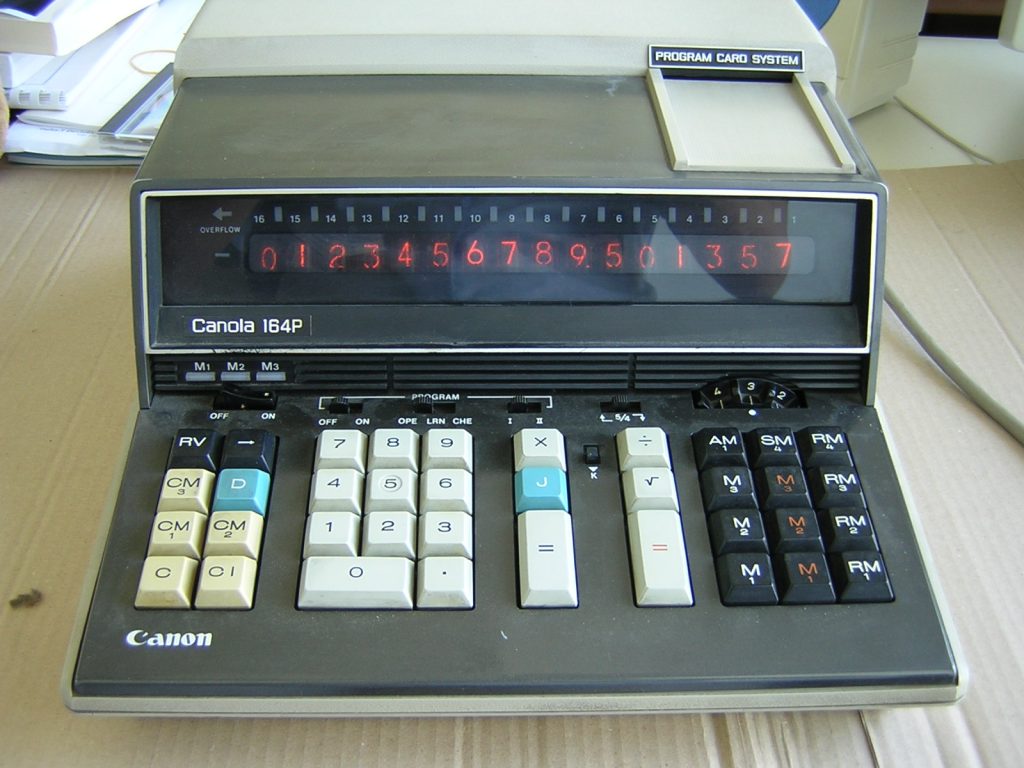About 50 years ago, my father had programmed this calculator, using perforated cards, to calculate a triangle’s area using Heron’s formula. To do this he had taken the machine near its limits: he had used all four memory registers and, as far as I remember, about 40 of the 64 available programming steps.

This is how it worked: You’d turn on the machine and set “PROGRAM” to “ON” and to “LRN” (learn). You gently pushed the perforated card into the slot—a sensor would detect it and a motor would pull it in and throw it out at the back after a few seconds. Then you’d set “PROGRAM” to “OPE” (operate) and you were ready. You’d key in a number (the length of a triangle’s side) and press the equal key (today we’d call that the Enter key), then a second number and then a third one. Then, the magic happened: it made the calculations (you could see the numbers changing fast on the screen), and the result was displayed after about one second.
Today this “program” is so trivial we wouldn’t even call it a program. When we talk about “software development”, the Census Crunch is probably as simple as it gets. What does the Census Crunch do? It lets you search in the FMCSA’s list of 1.7 million transport companies. I just took the FMCSA’s CSV file, and I’m giving you an interface with which you can segment it and download subsets of it in CSV format. Unless you want to implement Heron’s formula, any software you can imagine is probably going to be way larger than the Census Crunch.
How many hours did I work in order to create the Census Crunch? Make a guess, and then click here to learn the answer.